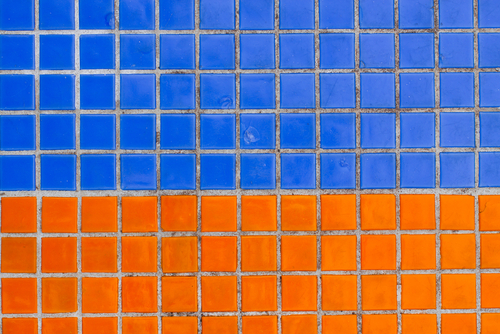What comes to mind when you hear “complementary colors”? Maybe you think of colors that have historically paired well together such as blue and silver or black and white. Though, when you learn a little more about the color wheel, you might get a little more inspiration about which colors to use for your home or office, while also learning more about complementary colors.

When it comes to the color wheel, mostly everyone knows about primary, secondary, and tertiary colors. But there is a lot more to the color wheel than most people may think, namely when it comes to complementary colors.
Complementary colors are ones that are directly across each other on the color wheel. For example, red and green sit opposite one another on the color wheel, which makes them complementary. Yellow and violet would be another example of a complementary pairing.
What Are Complementary Colors?
When you think of these color pairings you might think they sound a little weird. Now, while they may seem a little bold for some people, these colors actually work very well when paired together in moderation.
Huffington Post reported in 2015 that there are a lot of ways to play around with complementary colors. One of the best ways that you can use complementary colors without making your room too loud is to play around with varying tints and shades of specific hues. If you hop over to an article we wrote earlier this year about how to use the color theory to your advantage, you can take a look at the different terminology and get inspiration about how to sample tints and shades.
Some of the bolder color choices would be blue and orange, yellow and purple, and red and green. Though these might seem a little unorthodox, there are a few ways that you can sample the color scheme and make it work best for you:



There are other complementary color schemes as well, like yellow-orange and blue-violet, red-orange and blue, and red-violet and yellow-green.
How Can I Use Complementary Colors In The Home?
Designer Patrick Mele told One Kings Lane that you can also play with various tints to get the most out of complementary colors. In one of his designs, he talked about how he wanted to add blue and orange into the color pallet. “His blues included “‘cobalt, turquoise, Delft, navy,'” the publication reported. “‘Within the orange family, corals, tangerines, grapefruits. Really rich hues, not muted.'”
Freshome mentions how “this color combo is extremely high contrast, which means that it’s best used in small doses and when you want to draw attention to a particular design element. You could use it to make your powder room pop or to bring extra vibrancy to your home office.” They also suggest that you use one of the colors as the main color while using the other one as an accent color.



These unorthodox color combinations may not have crossed your mind before but there are lots of ways to play with the color wheel if you get creative and learn more about the different color schemes you can pull from it!
